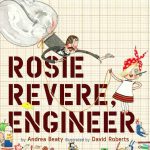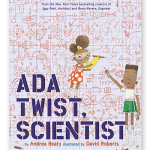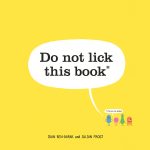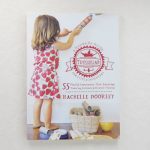Inspiring STEM in the Early Years and Primary School
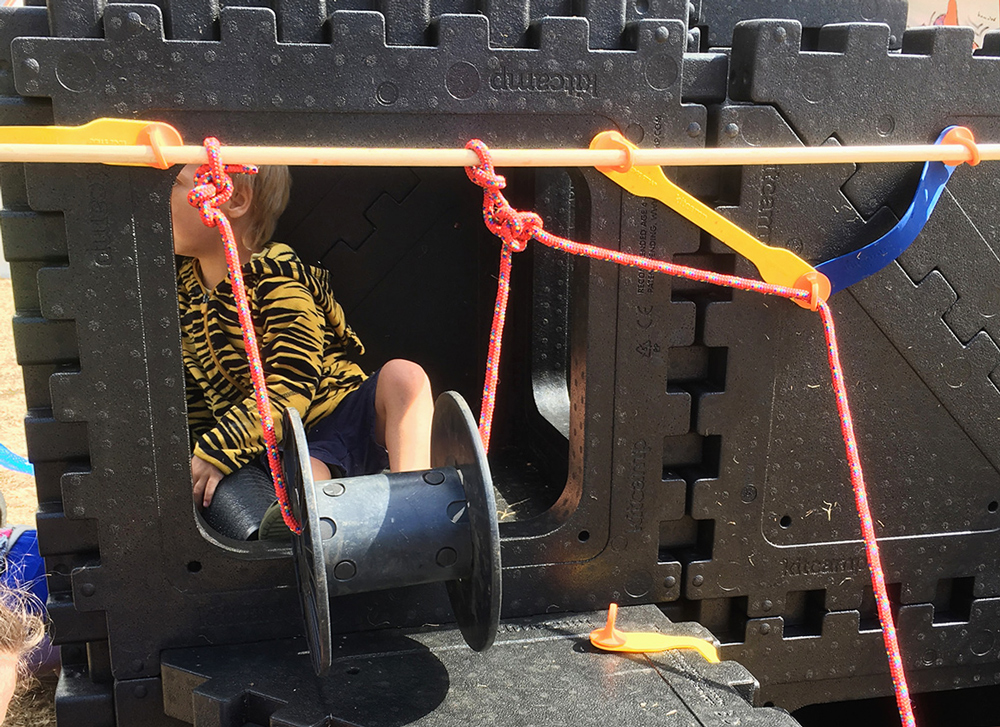
“The most important thing is to never stop questioning.”Albert Einstein
“What do you want to be when you grow up?”
My household’s current ambitions are an astronaut, a particle physicist at CERN, a spy and an underwater policeman! I love the aspiration, hope and imagination, but also that Science, Technology, Engineering and Maths (STEM) professions are well-represented; something to encourage when it is reported that “43% of (STEM) vacancies are hard to fill… mainly down to a shortage of applicants with the required skills and experience.” [1]
Read Lyndsey’s Blog: ‘Calling All Engineers: How can STEM in schools bridge the gap in our engineer shortage?’
STEM in Schools
Schools have woken up to the need to promote STEM subjects and to make connections with STEM industries for the sake of the UK’s economic growth and productivity [2].
“Scientists, technologists, engineers, mathematicians: these are the high-end knowledge workers who turn the wheel of the global economy.” [3]
STEM Learning provides resources and support for schools. Its website, www.stem.org.uk, has ideas for enrichment, activities, Continuing Professional Development, Clubs and Fairs as well as competitions and events. Interestingly, to increase the supply of STEM-skilled workers, there is now an increased effort “focusing on the start of the pipeline – primary school pupils.” It’s never too early to feed children’s curiosity!
STEM in the Early Years
As a parent and educator, how can I develop my children’s passion for STEM? Our future engineers and scientists begin as inquisitive tinkerers, full of whys and fiddling! There’s an innate desire to work out how things work. The ‘hands-on’ nature of Early Years’ settings gives opportunities to discover and explore and this learning-based play creates even more curiosity.
“Play is the highest form of research.”
Albert Einstein
Kitcamp supports STEM-based activities; planning and creating a structure requires problem-solving, imagination and practical engineering. Kitcamp-STEM ideas include:
- Plan and Design with small scale 3D models before building.
- Enhance your Kitcamp build with cardboard inserts and recycling materials to create something original.
- Combine Kitcamp with other resources, such as marble runs, pipes or K’nex.
STEM-related Books
Books exploring STEM ideas are great for prompting questions and curiosity. They’ll fire the imagination and stimulate ideas for play and discovery. Here are some of Kitcamp’s favourites:
-
Authors to look out for:
- Andrea Beaty. Her books ‘Iggy Peck, Architect’, ‘Rosie Revere, Engineer’, ‘Ava Twist, Scientist’ create stories that banish stereotypes and open up the imagination. Related activities at andreabeaty.com
- Iggy Peck, Architect
- Rosie Revere, Engineer
- Ada Twist, Scientist
- Roald Dahl’s stories are jam-packed with imaginative ideas and crazy inventions. Dahl’s characters problem-solve creatively to overcome difficulties. See Dahl’s STEM world for practical ideas.
- Mini Grey’s quirky and funny stories act as prompts to investigate materials, floating, gravity, and the universe. Titles include ‘Egg Drop’, about an egg that wants to fly, ‘Toys in Space’, ‘Space Dog’, and the ‘Traction Man’ series.
-
Science and Maths through story
- Billy’s Bucket by Kes Gray is full of amazing discoveries and encourages learning about capacity and comparison. ‘One is a Snail, Ten is a Crab’, by Jeff and April Sayre, is a counting-by-feet book.
- The idea is extended in ‘How many legs?’, by Jim Field and Kes Gray.
- Other resources at www.mathsthroughstories.com and Story Maths. There’s a great round-up of books for teaching Science for ages 5-11 at STEM.org.uk
-
Aspirational Stories of Scientists
- ‘The Genius of Leonardo’, by Guido Visconti, inspires with the story of the STEM hero Leonardo Da Vinci and shows his skills as an artist, inventor, engineer, architect, and scientist.
- See also Ramsey Dean’s ‘Riding on a Beam of Light’, an insight into the boyhood dreams and ideas of a young Albert Einstein.
- Inspire the next generation with ‘Women in Science: 50 Fearless Pioneers Who Changed the World’, by Rachel Ignotofsky. This collection celebrates trailblazing women in all STEM fields such as radioactivity researcher Marie Curie and ‘Apollo 11’ space mathematician Katherine Johnson.
- Pip Jones’ ‘Izzy Gizmo’ is a fictional inventor who never gets it quite right but learns to persevere to help a friend in need. The wonderful inventions, chaos and frustration will resonate with young experimenters.
- See also ‘The Matilda Effect’, by Ellie Irving, the adventure of a determined, dream-chasing inventor inspired by well-known scientists.
- In ‘Young Frank Architect’, by Frank Viva, MoMA books, budding architect Frank challenges his traditional grandfather with his mind-boggling buildings that twist and zigzag, created from anything he can lay his hands on! Great for ‘outside of the box’ construction.
-
Fictional Non-Fiction
- Take an alternative look at scientific understanding. ‘Anything is Possible’, by Giulia Belloni, tracks the ups and downs of creating a flying machine. Two friends, Wolf and Sheep, discover that teamwork and problem-solving are important parts of the creative process.
- ‘Do Not Lick This Book’, by Idan Ben-Barak, explores the world of microbiology from the viewpoint of Min, the microbe; a fun close-up look at dirt, microbes, and everyday things. Perfect for showing why we need to clean our hands and brush our teeth!
- ‘Harold’s Hungry Eyes: Food in Funny Places’, by Kevin Waldron. With buildings made of cheese, sofas from croissants, this picture book is a brilliant way of looking at materials and their purpose in a new light.
-
Investigate how things work
- Explore real-life buildings around the world with ‘Big City Explorer’ by Maggie Li, or the landmarks of London through ‘Welcome to London’ by Marcos Farina.
- See also ‘All the Buildings in London: That I’ve Drawn So Far’ and ‘Lonely Planet Kids: How Cities Work’, both by James Gulliver Hancock,
- Pore over these pictures books crammed with the workings of real and imagined vehicles. ‘William Bee’s Wonderful World of Trucks, Cars and Trucks and Things That Go’ (Richard Scary) and ‘All Kinds of Cars’ (Carl Johanson). What contraptions your trainee child-mechanics will be inspired to make?
- The Information Graphics Series by Simon Rogers gives a fresh and information-packed vision of the ‘Animal Kingdom’, the ‘Human Body’, ‘Space’ and ‘Technology’, see inside ‘Technology’. The beauty of infographics is the images surprise and entertain younger children and the facts inform older readers.
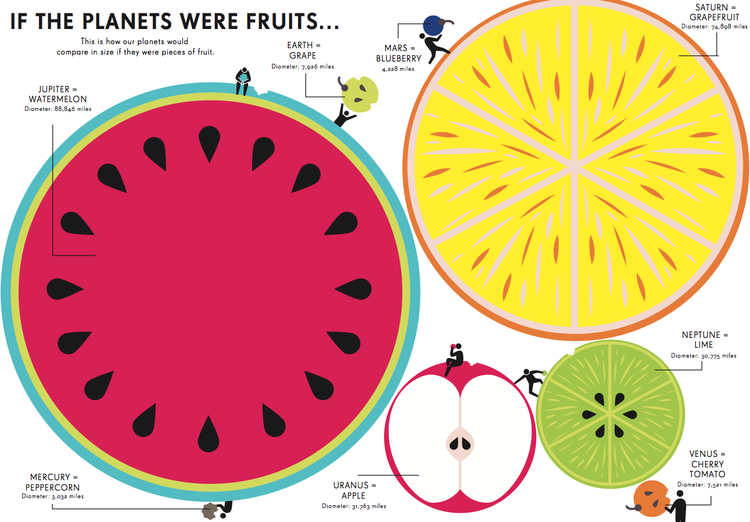
If planets were fruits, Space by Simon Rogers and Jennifer Daniel. Image from simonrogers.net is licensed under CC BY 3.0.
- ‘Stuff You Need To Know!’, by John Farndon and Rob Beattie). Discover and understand what lies within gadgets and technology!
-
For older readers. Get them asking questions and discovering possibilities. Plenty for younger children to look at too.
- ‘The Way Things Work Now’, the updated version of David Macaulay’s classic book, looks at how machines have developed and modernised. Macaulay’s other titles, ‘Underground’, ‘Castle’, ‘Rome’, ‘Cathedral’ and ‘City’, delve deeper into engineering and architectural details.
- ‘If… A Mind Bending Way of Looking at Big Numbers and Big Ideas’, David J Smith, if you are fascinated by huge numbers and statistics.
- ‘100 Steps for Science: Why it works and How it happened’, by Lisa Jane Gillespie, looks at humankind’s ten most important discoveries.
-
STEM e-books
- And finally, a few blogs and e-books. Rachelle Doorley adds the ‘A for Arts’ to STEM in her ‘STEAM’ website and book, ‘Tinkerlab: A Hands-On Guide for Little Inventors’.
- STEAM Kids e-book from the team at Left Brain Craft Brain has over 50 hands-on activities for young engineers.
LINKS
Kitcamp Insights: ‘Calling All Engineers: How can STEM in schools bridge the gap in our engineer shortage?’


